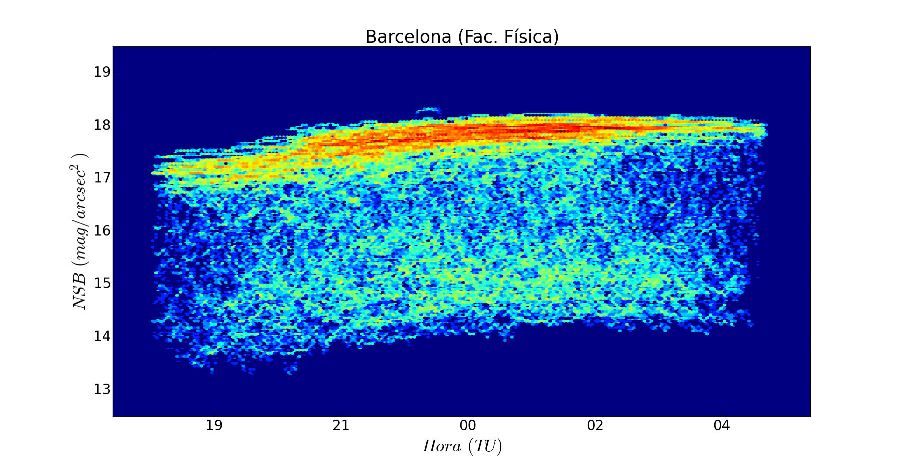A study determines that the night sky of Barcelona can be up to six times brighter when there are clouds

The research is part of the doctoral thesis of Salvador J. Ribas, directed by Jordi Torra, professor in the Department of Astronomy and Meteorology at the University of Barcelona and director of the Institute of Space Studies of Catalonia (IEEC).
Light pollution
Light pollution is any adverse effect of artificial light, such as the emission of light into the sky, the glare or also the use of lighting in inadequate places, times or types of light. Salvador J. Ribas, a member of the Institute of Cosmos Sciences (IEEC-UB) and scientific director of the Astronomical Park Montsec (PAM) explains that “although always light pollution has been linked to observing the sky and astronomy, their effects not only are detected in this area, but more and more studies are showing the effects on the environment, human health and, of course, on the energy consumption of a territory”.
The study of the effect of clouds has been carried out in two very different cases. The first is an urban case, specifically in the city of Barcelona, where data have been available from the ceilometer of the Department of Astronomy and Meteorology at the University of Barcelona, which has enabled continuously monitor the state of the sky. This device evaluates the state of the sky, by determining the presence and characteristics of the cloud layer or the presence of aerosols, on the vertical of the place where it is infrared laser light.
The sky of Barcelona
The analysis of data obtained between August and November 2015, confirms that in Barcelona, clouds increase the brightness of the sky background, as it had already been shown in two previous studies in the cities of Berlin and Hong Kong with night sky values between 5 and 10 times brighter in presence of clouds. “Specifically, the clouds are illuminated by artificial lighting that diffuses into the sky (known as skyglow effect) and, therefore, when there are low clouds in Barcelona, the sky brightness is increased more than six fold compared to the absence of clouds” said Ribas.
The graph shows the evolution of the brightness of the sky (NSB) in Barcelona throughout the night, with data from one year
Amplification of light pollution by clouds is produced by direct or reflected light from artificial lighting. Consequently, according to Ribas, “this amplification, and light pollution in general, would be reduced if we orient lighting in the cporrect direction and with the right intensity to avoid sending light into the sky.” In this regard, the researcher added, “Catalonia is a pioneer with the Law of Light Pollution adopted in 2001 and the recent regulations which came into force last November. Now we have to see which effects will have on the quality of heaven medium term”.
Darkening of protected areas
The second case study is the protected area of Montsec, a benchmark in terms of astronomical interest that has been declared reserve Starlight, a worldwide UNESCO certification which requires excellent conditions of night sky. For this part of the study, researchers have used data from ceilometer of the Institute of Environmental Assessment and Water research (IDAEA-CSIC), that has been able to analyse data from the background of sky obtained between October 2014 and April 2015 with the meters of the Observation Center of the Universe of the Observatori Astronòmic del Montsec.
Results show that, in areas without light pollution, clouds do not increase the brightness of the sky background, because artificial lighting almost does not illuminate the sky. Moreover, it has also been found that low clouds which in Barcelona make a much more bright sky, darken the Montsec sky; so researchers obtained darker values of sky with clouds than without them, because clouds block the sources of natural light of sky, like stars, the Milky Way, etc.
The same type of graph of the Montsec
To carry out this comparative study of data bright sky background with clouds, researchers has used simultaneous measurements of ceilometers with those obtained with the apparatus Sky Quality Meter, comprising the first continuous network of measures of Catalonia and forming part of a project of PAM and the Directorate General of Environmental Quality of the Generalitat of Catalonia to develop the first map of light pollution in Catalonia.
